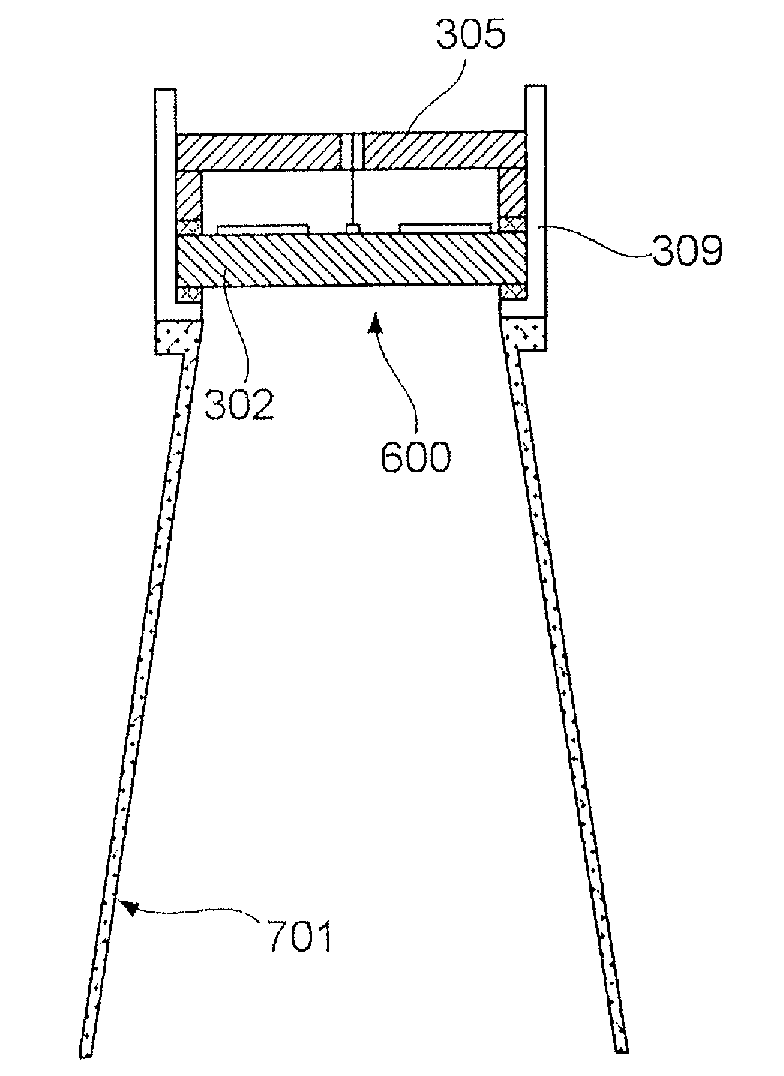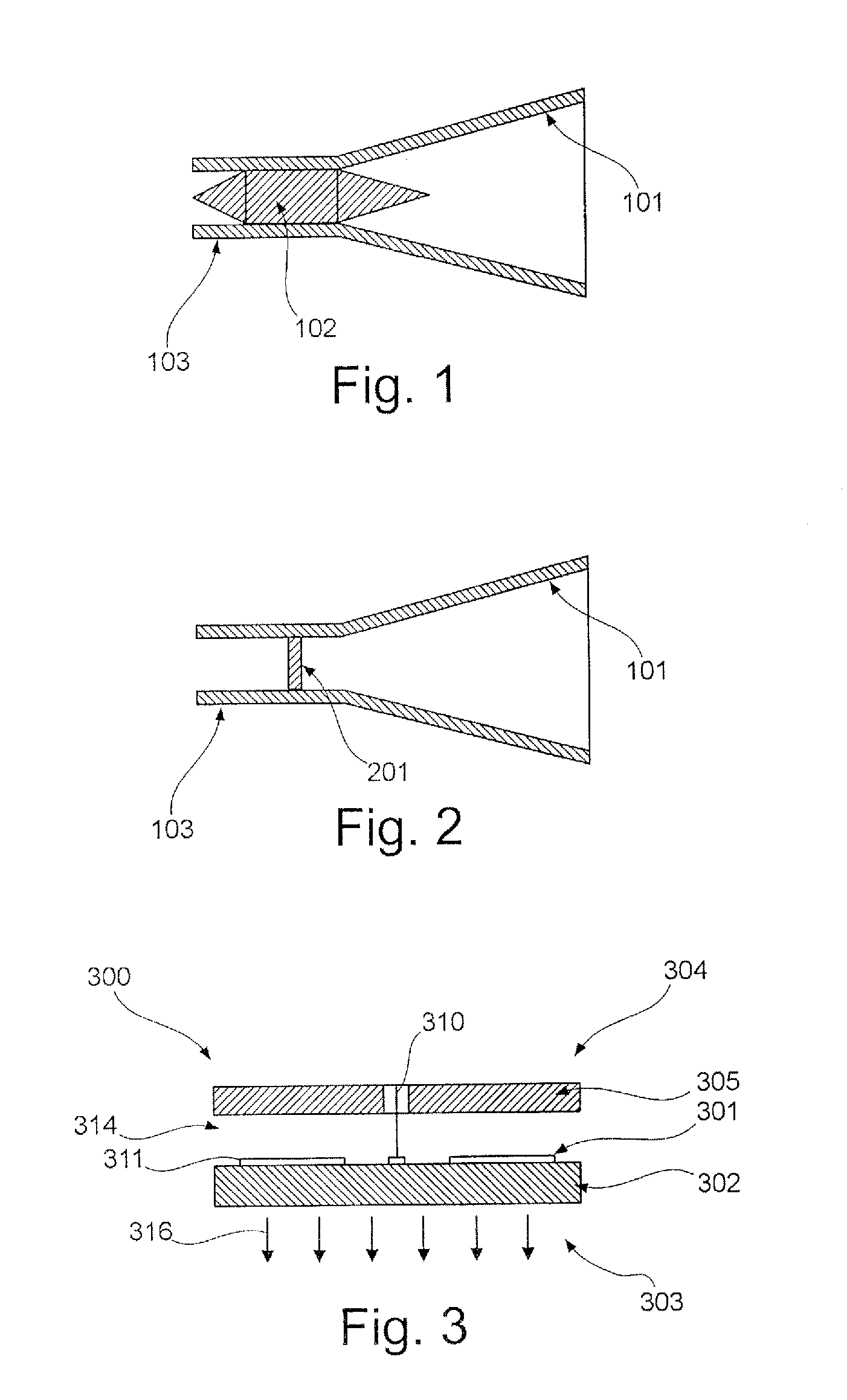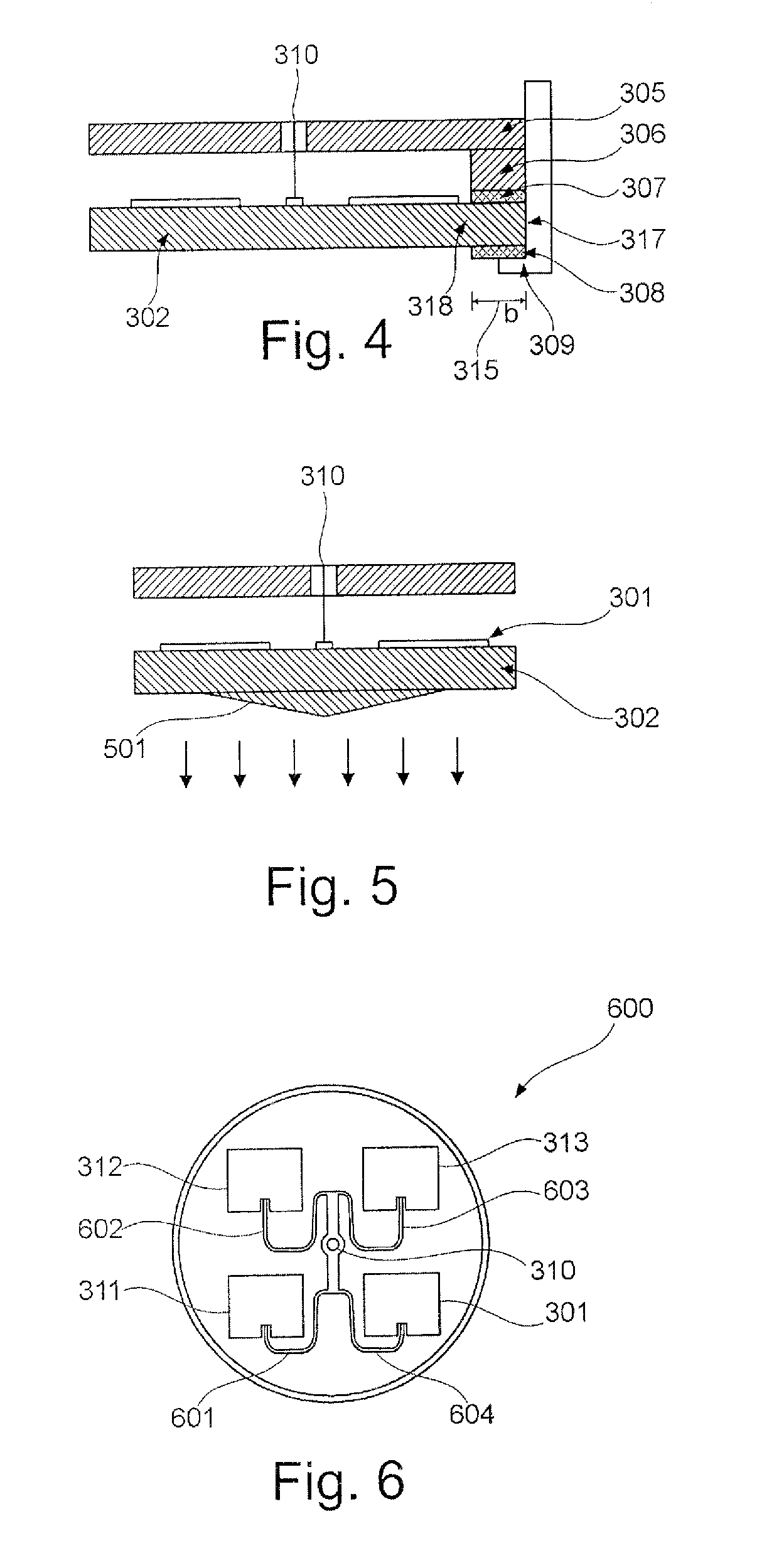Patch antenna with a ceramic plate as a cover
a technology of ceramic plate and cover, applied in the direction of liquid/fluent solid measurement, waveguide horn, instruments, etc., can solve the problems of antenna filling or seal, inability to meet the requirements of high temperature, and inability to achieve, so as to reduce the soiling of the exterior region of the process separation device.
- Summary
- Abstract
- Description
- Claims
- Application Information
AI Technical Summary
Benefits of technology
Problems solved by technology
Method used
Image
Examples
Embodiment Construction
[0052]In the following description of the figures the same reference characters are used for identical or similar elements.
[0053]FIG. 1 shows a diagrammatic view of a horn antenna 101 with an adaptor cone 102 made of a dielectric material. In this arrangement the electromagnetic transmission signal is introduced into the horn antenna 101 by way of the hollow conductor 103 and the adaptor cone 102 and is then radiated to the feed material. If the adaptor cone from a dielectric material 102 is to be designed as a process separation device for high temperatures and high pressures, it has to comprise a corresponding temperature resistance and pressure resistance. It must thus not be made of plastic material as it would melt at elevated temperatures. However, if the adaptor cone 102 is made from temperature-resistant materials such as ceramics or glass, this can result in problems during signal transmission due to the high relative permittivity of the materials ceramics or glass. As a re...
PUM
 Login to View More
Login to View More Abstract
Description
Claims
Application Information
 Login to View More
Login to View More - R&D
- Intellectual Property
- Life Sciences
- Materials
- Tech Scout
- Unparalleled Data Quality
- Higher Quality Content
- 60% Fewer Hallucinations
Browse by: Latest US Patents, China's latest patents, Technical Efficacy Thesaurus, Application Domain, Technology Topic, Popular Technical Reports.
© 2025 PatSnap. All rights reserved.Legal|Privacy policy|Modern Slavery Act Transparency Statement|Sitemap|About US| Contact US: help@patsnap.com



